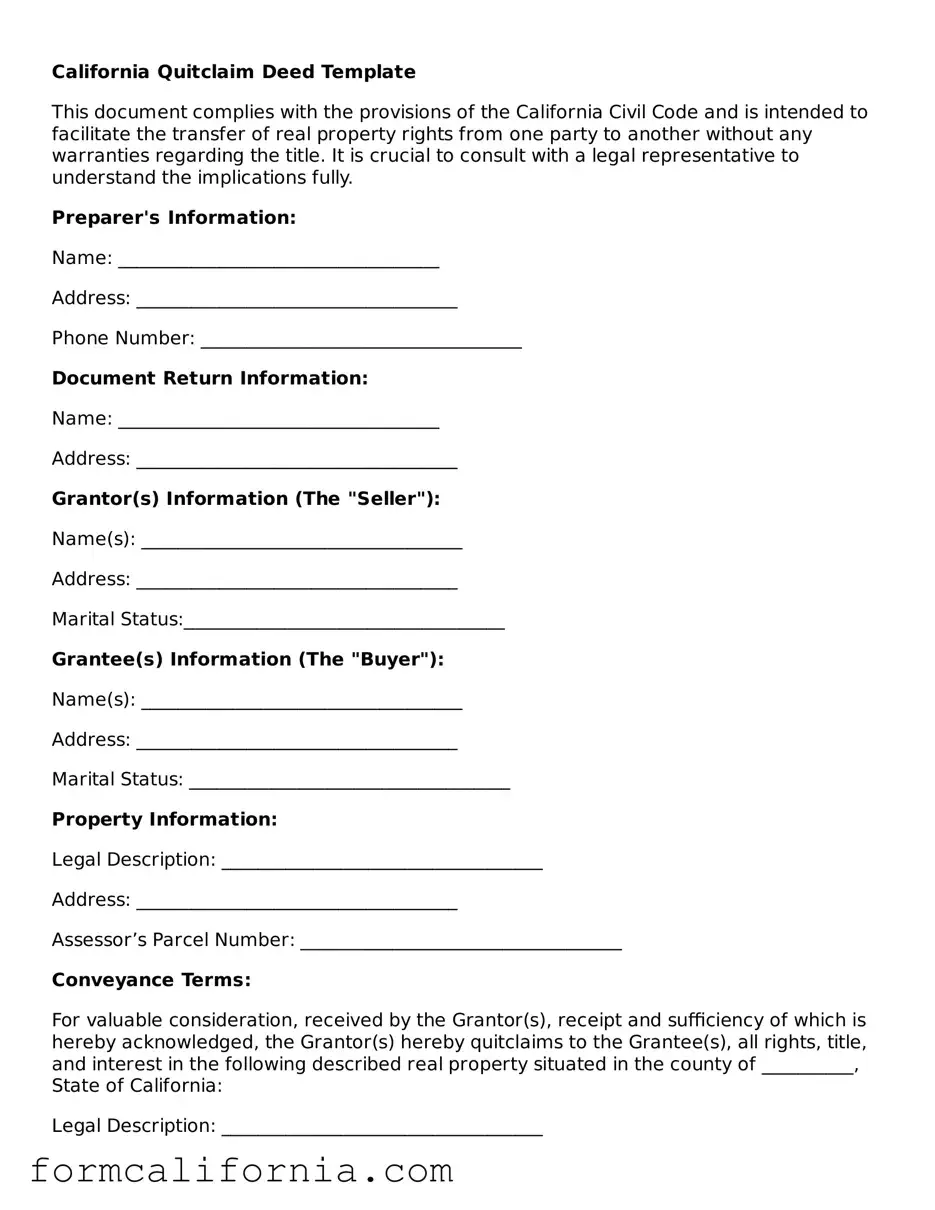California Quitclaim Deed Template
This document complies with the provisions of the California Civil Code and is intended to facilitate the transfer of real property rights from one party to another without any warranties regarding the title. It is crucial to consult with a legal representative to understand the implications fully.
Preparer's Information:
Name: ___________________________________
Address: ___________________________________
Phone Number: ___________________________________
Document Return Information:
Name: ___________________________________
Address: ___________________________________
Grantor(s) Information (The "Seller"):
Name(s): ___________________________________
Address: ___________________________________
Marital Status:___________________________________
Grantee(s) Information (The "Buyer"):
Name(s): ___________________________________
Address: ___________________________________
Marital Status: ___________________________________
Property Information:
Legal Description: ___________________________________
Address: ___________________________________
Assessor’s Parcel Number: ___________________________________
Conveyance Terms:
For valuable consideration, received by the Grantor(s), receipt and sufficiency of which is hereby acknowledged, the Grantor(s) hereby quitclaims to the Grantee(s), all rights, title, and interest in the following described real property situated in the county of __________, State of California:
Legal Description: ___________________________________
(Attach additional pages if necessary)
The Grantor(s) declares that the property transferred by this deed is not subject to a documentary transfer tax under the California Revenue and Taxation Code or is exempt because ___________________________________.
Signatures:
The Grantor(s) has/have executed this deed on ____________________ (date).
Grantor’s Signature: ___________________________________
Printed Name: ___________________________________
Grantor’s Signature: ___________________________________
Printed Name: ___________________________________
This document must be acknowledged before a Notary Public and filed with the County Recorder’s office in the county where the property is located to be effective.
State of California
County of ____________________
On ____________________ before me, _______________________________ (insert name and title of the officer), personally appeared _______________________________, who proved to me on the basis of satisfactory evidence to be the person(s) whose name(s) is/are subscribed to the within instrument and acknowledged to me that he/she/they executed the same in his/her/their authorized capacity(ies), and that by his/her/their signature(s) on the instrument, the person(s), or the entity upon behalf of which the person(s) acted, executed the instrument.
WITNESS my hand and official seal.
Signature _______________________________
(Seal)
This template is provided as a general guide and does not constitute legal advice. Parties to a quitclaim deed should seek the advice of a licensed attorney to ensure that their rights and interests are adequately protected.
